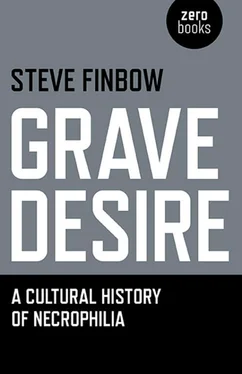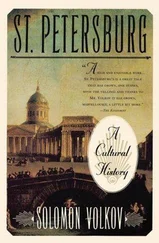Robert Musil (November 6, 1880–April 15, 1942), Peter Kürten (26 May 1883–2 July 1931), Franz Kafka (3 July 1883–3 June 1924), Adolf Hitler (20 April 1889–30 April 1945), Ludwig Wittgenstein (26 April 1889–29 April 1951), Martin Heidegger (September 26, 1889–May 26, 1976), John Heartfield (19 June 1891–26 April 1968), Walter Benjamin (1892–1940), George Grosz (26 July 1893–6 July 1959), The social and economic privations after the First World War, the German Revolution of 1918, and the Weimar Republic (1918–33) caused an explosion of avant-garde art, literature, and film, and a commensurate increase in sex killing and cannibalism. Of the four lust murderers who stalked Germany in the 1920s, four practised necrosadism, three necrophagy, and suspicion must fall on all of them for being necrophiles.
The exploits of these murderers found their way into literature in the character of the psychopathic Moosbrugger in Musil’s The Man Without Qualities (1930–42), Vladimir Nabokov’s Despair (1934)—written while Nabokov was living in Berlin, D.M. Thomas’s The White Hotel (1981), and Patrick Süskind’s Perfume (1985). A late German Expressionist film—and forerunner of film noir—premiered on 11 May 1931 while Peter Kürten awaited execution. Set in Berlin, the crimes of the paedophiliac sex killer Hans Beckert, played by Peter Lorre, are similar to those of Grossmann, Denke, Haarmann, and Kürten, the film portraying a city (Berlin) terrorized—as Paris, Hanover, and Düsseldorf had been—by a necrosadist.
Throughout the film, the sex-killer whistles the refrain ‘In the Hall of the Mountain King’ from Edvard Grieg’s Peer Gynt, the lyrics of which could have been sung in disharmony by the barbarous quartet of Kürten, Grossmann, Haarmann and Denke:
May I hack him on the fingers?
May I tug him by the hair?
Hu, hey, let me bite him in the haunches!
Shall he be boiled into broth and bree to me
Shall he roast on a spit or be browned in a stewpan?
Cut to: Patch of scrub bordered by trees (Berlin’s Grunewald forest standing in for Düsseldorf’s Grafenberger Woods), a small ball rolls out of the undergrowth and rocks to a stop. Cut to: Child’s balloon, anthropomorphic, all torso and head, spastically dancing against overhead electric wires—a young girl is murdered, maybe raped, and a city searches for her killer—Fritz Lang’s M.
29 years later, a basement (abasement), a young woman touches the shoulder of an old lady and the chair she is sitting on swivels around in a rocking chair to reveal a mummified (mummyfied) corpse, skin shrivelled to the skull, teeth revealed to their roots, a dark void where once were eyes. The young woman screams, turns to run, a lightbulb swings giving the room a German-Expressionist chiaroscuro. As she screams, another old woman lunges through the door wielding a knife, a man follows and grapples with her, in the struggle, the woman’s wig falls off revealing a young man dressed as his dead mother—Alfred Hitchcock’s Psycho.
Slavoj Žižek [129] The Pervert’s Guide to the Cinema, dir. Sophie Fiennes, released January 2009. Author transcription.
argues that the mother’s house in Psycho reproduces the three levels of human subjectivity. The ground floor is ego where Norman acts as a normal son. The first floor is the super-ego in the figure of the dead mother. Down in the cellar is the id—the reservoir of illicit drives. When Norman carries his mother’s mummified corpse down to the basement, it’s as though he were transferring the super-ego to the id. Žižek—through Freud [130] See Sigmund Freud, The Dissection of the Psychical Personality, New Introductory Lectures on Psychoanalysis, trans. James Strachey (New York, 1995) pp. 71-100.
—sees the super-ego as an obscene agency perpetually bombarding the self with impossible orders, unapplicable ethics, unrealizable morals, that make us feel guilty for not achieving (or heeding) its dictums. Both Bertrand and Kürten had unsuccessful relationships with their fathers, they had no identification with the parental agency. If the installation of the super-ego can be described as a successful instance of identification with the parental agency, these men were failures, their super-egotistical striving for perfection retarded at an early age, they did not develop a conscience to control their fantasies, drives, and actions. Without a regulatory super-ego they did not feel guilt. Both Bertrand and Kürten simulated a super-ego in their dress, manner, and occupations, yet neither had any conception of social acceptability. If the super-ego is the regulatory control of the father internalized, then Bertrand and Kürten were without the father, without conscience, without morality and taboo, both men living in a perpetual Oedipal complex stage, the fear of castration transferred to the other—the other as victim. It could be argued that revolutionary France and Weimar Republic Germany had shifting and inchoate super-egos, the cultural and personal super-ego—which should be inter-locked—fractured and formed these men in worlds of relative morality and transitional ethics because a cultural super-ego ‘does not trouble itself enough about the facts of the mental constitution of human beings.’ [131] Sigmund Freud, Civilization and Its Discontents, trans. James Strachey (New York, 2005), p. 141.
If the cellar, basement, tomb represents the id—the arena of abasement—then that is where the necrophile resides, in the realm of the ‘pleasure principle,’ the unconscious becomes the freedom from tension (Bertrand’s blackouts and Kürten’s need to release built-up pressure). This is Freud’s ‘chaos, a cauldron full of seething excitations’ in which ‘contrary impulses exist side by side, without cancelling each other out.’ Neither Bertrand or Kürten can be considered evil because they do not understand the concept, their pleasure instinct existing alongside their death drive, the bodies they kill, they have sex with, they mutilate are an attempt to ‘lead organic life back into the inanimate state.’ [132] Sigmund Freud, ‘The Ego and the Id,’ The Standard Edition of the Complete Psychological Works of Sigmund Freud, Vol. 19, trans. James Strachey (London, 2001), p. 40.
Bertrand and Kürten’s sexual and violent psychopathic events were ‘instinct(s) of destruction directed against the external world and other organisms.’ [133] ‘The Ego and the Id,’ p. 41.
Or, in Bertrand’s case, destruction directed against the internal organs. He did this to destroy the human—Bertrand the id-machine, the dead but made alive, made dead bodies, fuel to his libido, his virtual reality powered by his libido that is always/already firing his fantasies. The fantasy realized is sustained by extreme violence. Discussing the implied necrophilia in Hitchcock’s Vertigo, Žižek claims the fantasy is realized as ‘a process of mortification, which also is the mortification of woman’s desire. It is as if in order to have her, to desire her, to have sexual intercourse with her, with the woman, Scottie has to mortify her, to change her into a dead woman. It’s as if, again, for the male libidinal economy, to paraphrase a well-known old saying, the only good woman is a dead woman.’
6
NecroCinema—Prohibition, Inhibition, Exhibition
From the outside, the building resembles a classic American house, all apple pie and brilliant smiles: white clapboard, porch swing, all framed by a blue sky embroidered with puffy white clouds. A young woman—Pam—dressed in halter-neck, red shorts, walks into the house looking for her boyfriend Kirk. In the dark hallway, she hears a noise—something like large blades slicing against one another. In the background, the incessant hum of a generator. She pushes open heavy curtains, trips, and falls on to the floor. Beneath her fingers, thousands of feathers, and within the feathery undergrowth, hundreds of bones. A fat chicken in a too-small cage clucks and pecks at the bars. Pam looks around the room, the floor is littered with femurs, mandibles, the tarsals, metatarsals, and phalanges of a human foot. She looks up and sees that the foot connects to a tibia, but then the skeleton becomes deterritorialized. The phalanages, metacarpals, and carpals of a human hand lead to an ulna and radius, which in turn lead to a non-human connective bone attached by leather ties to a human skull flanked by a pair of cow scapula. (So far, so Hans Bellmer.) As the camera pans out, the monstrous assemblage resembles a shrine. As Pam looks around the room in terror, she sees various skeletal remains, human and animal, tied together with string or mounted on the walls—a human skull with a bull’s horn penetrating its jaws, a turtle carapace, a tiny thoracic cage. On her hands and knees, she vomits in the ossuary/fetish/altar/shrine. Choking and panicking, shouting for her boyfriend Kirk, Pam stumbles out of the room into the corridor. A metal door slides open—the door should not be there, it has no right to be in the dream house, it has been transported there from the slaughterhouse, from the nightmare, from Père Lachais, from Düsseldorf. A man wearing a butcher’s apron catches her and, laughing, carries her screaming back into the house and into the room beyond the sliding metal door. Once inside, he lifts her—still screaming—on to a large butcher’s hook, a human body on the slab in front of her. The man crosses to a sink area and revs up a chain saw. It is then that we get a proper glimpse of his mask—it is made from segments of human faces, the skin stitched together with black leather thread. Later. Sally, having witnessed her wheelchair-bound brother sliced open by the chainsaw-wielding masked man, flees into the dream house, runs upstairs to the attic. Applying Žižek’s psychological house rules, Sally flees into what she hopes is the super-ego, the arena of control, the realm of conscience, the antithesis to the id-wielding masked man. But there—in a similar way to the discovery of the mummified corpse in Psycho—she discovers the desiccated corpse of an old woman, and the near-to-death body of an old man—who turns out to be the grandfather—the super-ego near extinction. Later. Sally’s fingers are bled and the blood fed to the corpse-like grandfather (resembling an animatronic William S. Burroughs), who sucks her fingers, a perverse oral sexuality, and gains strength as he does so.
Читать дальше












